Germany's 2018 hopefuls vs 2014 World Cup winners: which squad is better?
autty 2018-06-09 12:00:05 评论
Bayern Munich forward Thomas Müller's recent claim that on an individual level Joachim Löw's 2018 squad are "certainly better" than the 2014 vintage – in part due to having two players in every position – had bundesliga.com scratching its head.

Was Müller right? Could the squad heading to Russia to contest the FIFA World Cup 2018 really be better than its trophy-winning, legendary predecessors in Brazil four years earlier? bundesliga.com put both squads under the microscope to decide.
Goalkeepers: Neuer plus two?
2018: Manuel Neuer (Bayern Munich), Marc-Andre ter Stegen (Barcelona), Kevin Trapp (Paris Saint-Germain)
2014: Manuel Neuer (Bayern Munich), Roman Weidenfeller (Borussia Dortmund), Ron-Robert Zieler (Hannover)
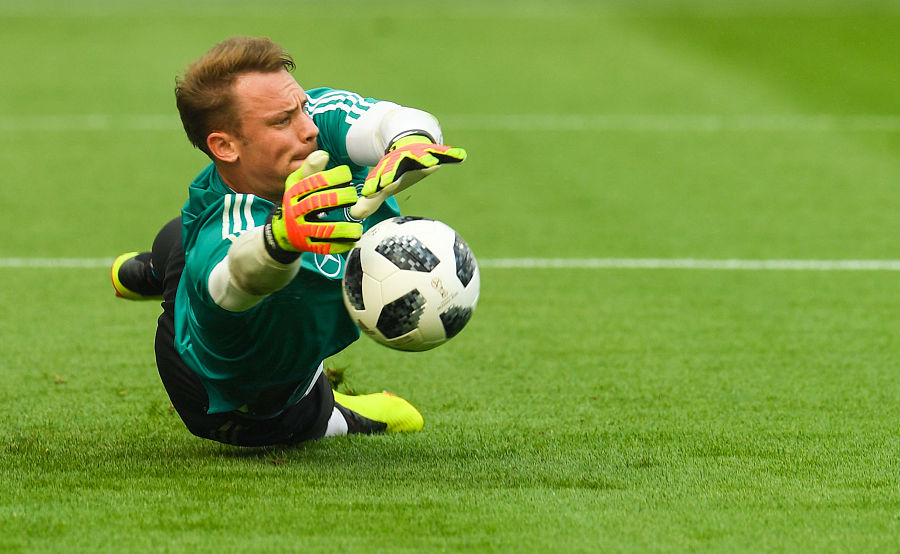
On first glance, it would appear that the 2018 squad has the edge in the goalkeeping stakes. Bayern's Neuer is back and fit, No2 ter Stegen has enjoyed a fine season at Barcelona, while former Eintracht Frankfurt stopper Trapp is plying his trade at French champions Paris Saint-Germain. In sum, Löw not only has the choice of goalkeepers from three of Europe's biggest clubs, but will also sleep easy in the knowledge that Neuer can at no stage rest on his laurels – not that he would – with such high-class competitors breathing down his neck.
Look closer at the class of 2018, however, and a few cracks begin to emerge, particularly when held up against 2014: Neuer has not played competitively for Germany since a 2-0 win against Northern Ireland in October 2016 and has not represented Bayern since last September due to a broken foot. Accordingly, the captain's fitness for the biggest games – and there are few bigger than at the World Cup – remains a doubt, overshadowing preparations.

The obsession with Neuer's left foot has also overshadowed the fine performances of his understudy, former Borussia Mönchengladbach keeper ter Stegen. The 26-year-old kept 19 clean sheets as Barca romped to the Liga title, before justifiably claiming – having been talked up by Löw prior to Neuer's return – that being second choice for his country was a "disappointing situation".
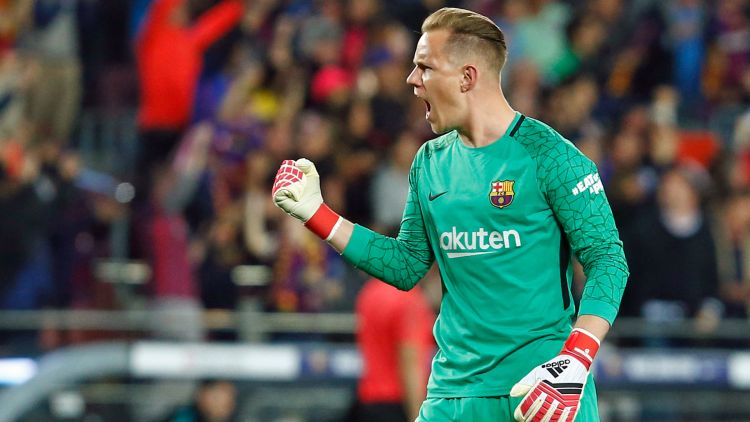
Compare that state of affairs to 2014, when a fully fit Neuer was not only the undisputed No1, but had come off a double-winning season under the tutelage of Pep Guardiola. Indeed, that 2013/14 campaign was perhaps peak Neuer – the point at which the Gelsenkirchen native developed into a sweeper-keeper supreme, as evident in his match-winning last-16 performance against Algeria in Brazil.
On top of that, Neuer's back-up in Brazil – two solid Bundesliga keepers in Borussia Dortmund's Weidenfeller and Hannover's Zieler – were both delighted to be selected and understood their roles, serving as sounding boards while competitive enough to keep the main man on his toes without ever overstepping the line.
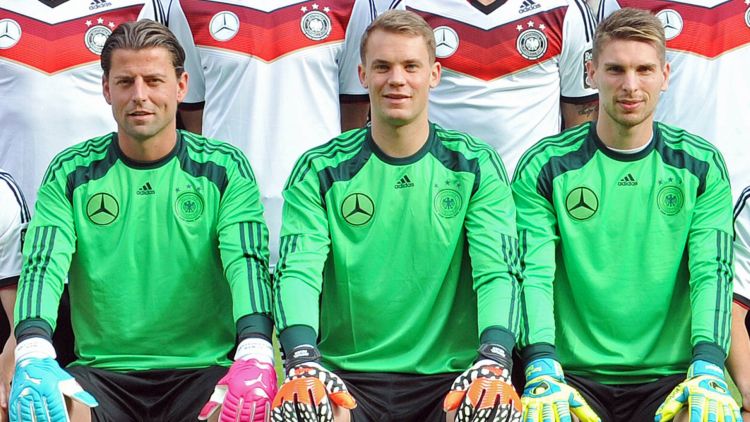
Verdict: The 2014 selection gets the nod. Primarily, a fit Neuer trumps a doubtful Neuer, and with team spirit so important at a major finals, positive, reliable back-ups – Weidenfeller and Zieler – outweigh even the combined talents of ter Stegen and Trapp.
Defence: How irreplaceable is Lahm?
2018: Marvin Plattenhardt (Hertha Berlin), Jonas Hector (Cologne), Matthias Ginter (Borussia Mönchengladbach), Joshua Kimmich (Bayern Munich), Mats Hummels (Bayern Munich), Niklas Süle (Bayern Munich), Antonio Rüdiger (Chelsea), Jerome Boateng (Bayern Munich)
2014: Kevin Großkreutz (Borussia Dortmund), Matthias Ginter (Freiburg), Benedikt Höwedes (Schalke), Mats Hummels (Borussia Dortmund), Erik Durm (Borussia Dortmund), Philipp Lahm (Bayern Munich), Per Mertesacker (Arsenal), Jerome Boateng (Bayern Munich), Shkodran Mustafi (Sampdoria)
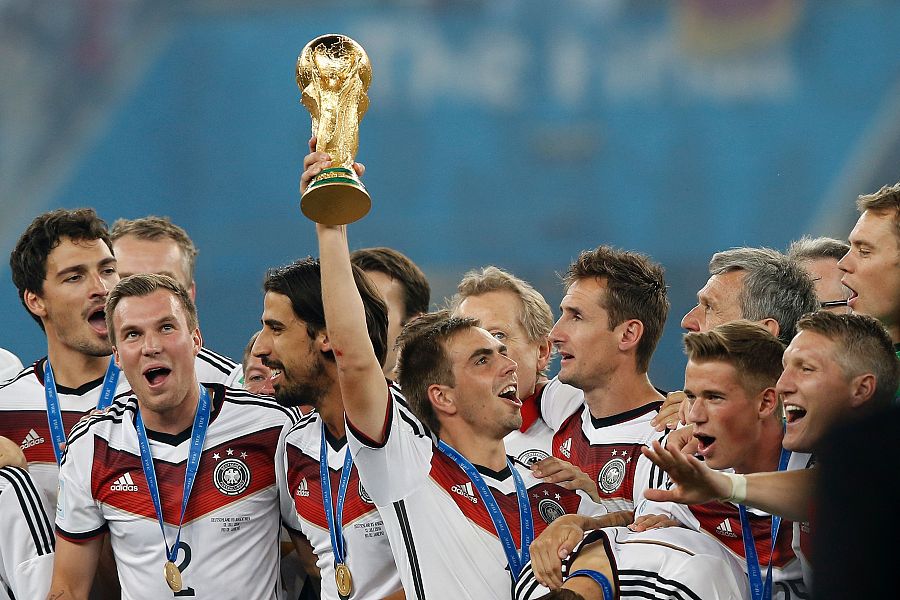
The big names jump out of the 2014 selection, and none more so than Lahm, who - much like Neuer - was at the peak of his powers in the lead-up to Brazil. The Bayern skipper had improved after working under Guardiola for a season, and was fielded in his new midfield role and in his customary full-back berth by Löw, eventually settling in at right-back once the knockout stages began. The Germany captain was at his metronomic best in Brazil, not missing a single minute on his nation's road to a fourth global crown.
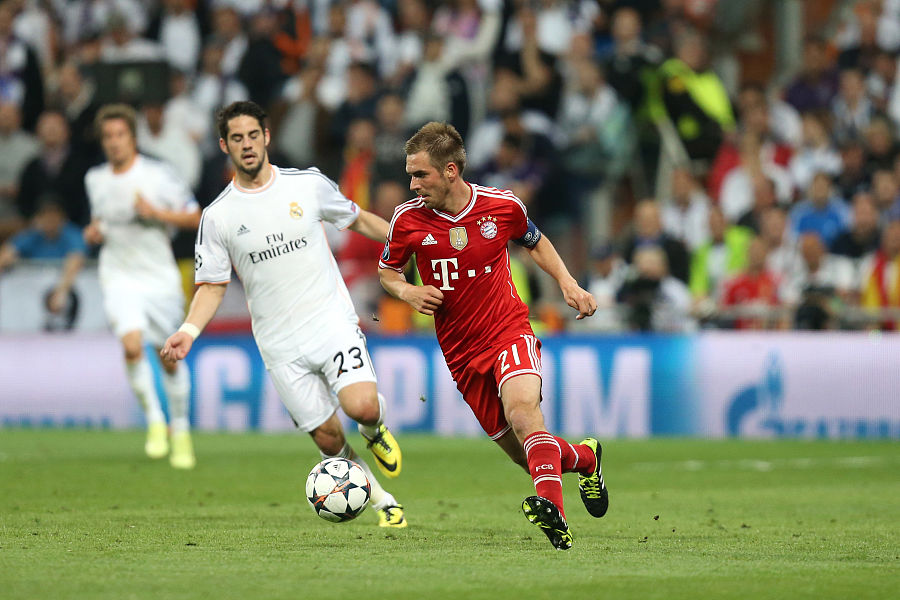
So how do you solve a problem like replacing Lahm? Well, you create a Kimmich. The latest Bayern full-back might not like the Lahm comparisons, but he really is as close as they come: Kimmich is capable of playing holding midfield, but has similarly made the right-back berth his own for club and country, while over the past season he has mirrored Lahm's consistency, notably featuring in 24 straight games in the build-up to Russia and breaking a record held by a certain Franz Beckenbauer.
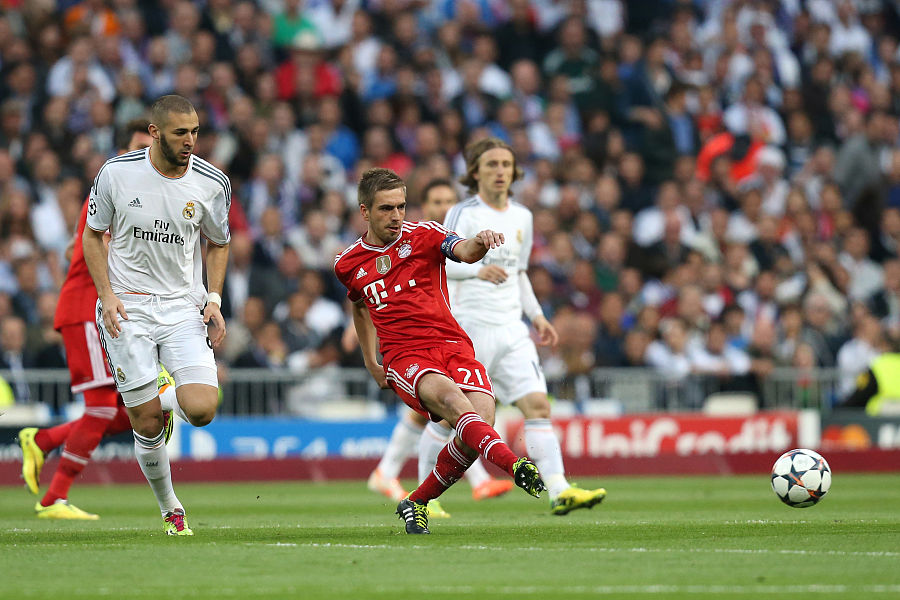
If there was any muted criticism of Lahm for his meagre attacking returns, then such an accusation can hardly be levelled at Kimmich: the dynamic 23-year-old picked up a team-high nine assists in qualifying for the 2018 World Cup.
Of course, Lahm had all that experience in 2014, plenty would suggest in response. Well, it's not as if Kimmich – even at 23 – is inexperienced: he has impressed in the knockout stages of the UEFA Champions League three seasons running and was named in the UEFA Euro 2016 team of the tournament, despite only playing the last four of Germany's six games. It's a close-run thing between the two.
If the notion that it is impossible to replace Lahm is disproved in the form of Kimmich, it is time to look infield to the centre-backs: while right-back initially looked the hardest position to fill post-2014 and Lahm's retirement, centre-back was the easiest. The Hummels-Boateng partnership was at the foundational stage in 2014 – yet still impressive enough to win a World Cup – and is now a fully constructed wall.
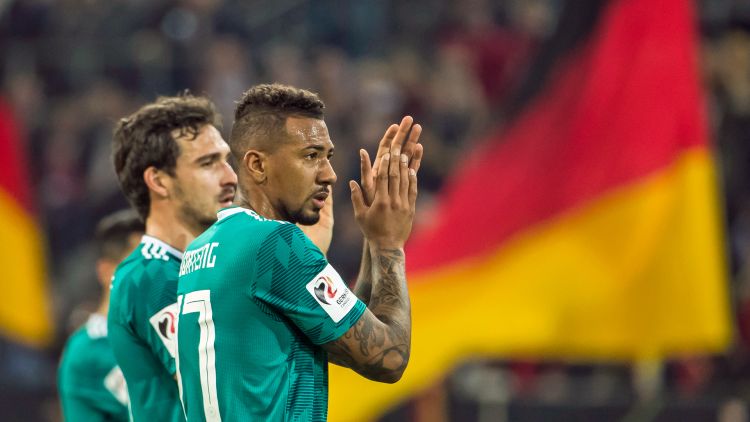
Two seasons of Hummels and Boateng alongside each other at club level (after Hummels arrived in Munich from BVB in 2016) mean that Germany will boast the best centre-back partnership at the tournament, bar none; in fact, Löw's 2018 squad boasts the best back-up centre-back, too: Süle is a perfect first reserve for Hummels or Boateng – given how well he knows both from a season at Bayern – and what he lacks in experience compared to Mertesacker in 2014, he more than makes up for in sheer pace and God-given ability.

Further across at left-back, Germany also boast an upgrade four years ago in the shape of Hector. While Höwedes impressed in Brazil by filling in at left-back – not his natural position – and excelled as another on-field leader, having been Schalke captain since 2011, Hector is a natural full-back, and one who offers the added bonus of being able to play either on the left of a back three, at left wing-back or in central midfield.
Naturally a quiet character, Hector has nonetheless been de facto captain at Cologne – another demanding club – in the last few seasons and although he perhaps lacks some of the nous Höwedes picked up over years of playing in the latter stages of the Champions League, the Auersmacher native did sink his penalty in the UEFA Euro 2016 quarter-final shoot-out against Italy, proving his Germany credentials and underlining his reliability.
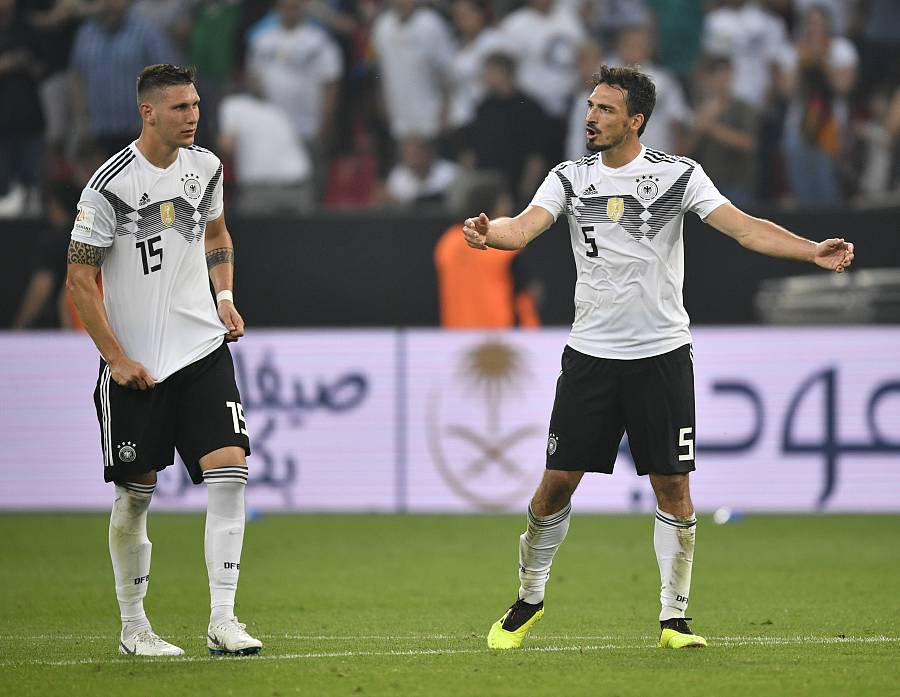
In the reserves, the 2018 squad also looks stronger than its 2014 counterpart: Rüdiger has enjoyed a fine season for Chelsea (compared to Mustafi, piloted in as a last-minute reserve from Sampdoria in 2014); Plattenhardt offers more than Durm and Großkeutz at both ends, notably set-piece delivery going forward; while Löw's beloved utility player Ginter – who is comfortable at right-back, centre-back and holding midfield – has improved no end after a season of regular football at Gladbach.
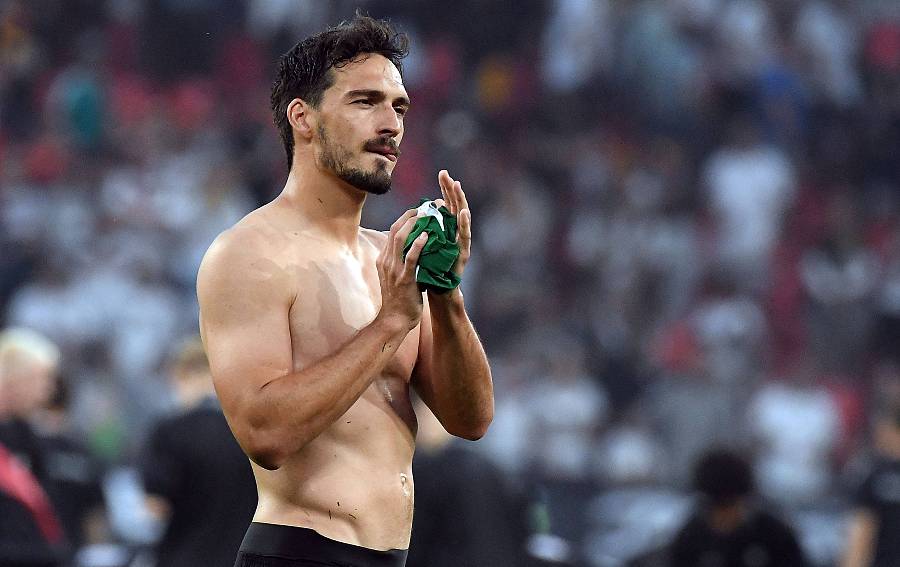
Verdict: It's not just the defensive reserves that look stronger, then. The 2018 squad boasts a better defence all round: a future Germany captain, the uber-talented Kimmich has enough big-game experience and poise to compensate for Lahm's absence; Hector – although not as natural a leader as Höwedes – is more reliable and positionally sound; centre-backs Hummels and Boateng have come on leaps and bounds both individually and as a partnership in the intervening four years.
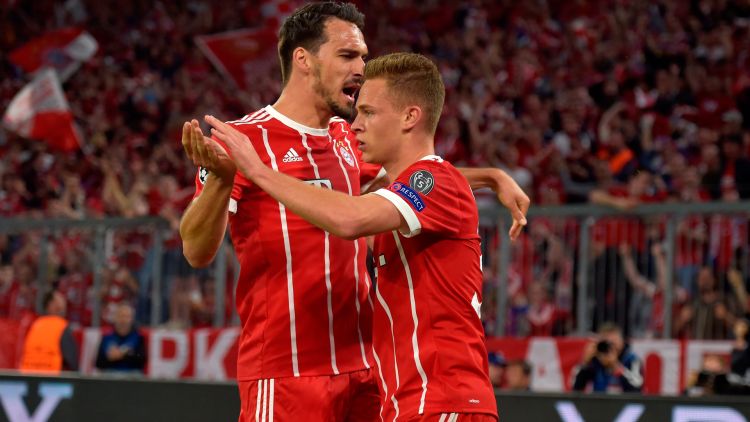
Midfield: More goalscoring threat than ever before?
2018: Sami Khedira (Juventus), Julian Draxler (Paris Saint-Germain), Toni Kroos (Real Madrid), Mesut Özil (Arsenal), Leon Goretzka (Schalke), Sebastian Rudy (Bayern Munich), Ilkay Gündogan (Man. City), Julian Brandt (Bayer Leverkusen)
2014: Sami Khedira (Real Madrid), Bastian Schweinsteiger (Bayern Munich), Mesut Özil (Arsenal), Julian Draxler (Schalke), Toni Kroos (Bayern Munich), Mario Götze (Bayern Munich), Christoph Kramer (Borussia Mönchengladbach)

If the midfield of the 2014 squad was slightly more defensive in its outlook – Kramer, Khedira and Schweinsteiger were natural holding midfielders – then the 2018 midfield hints at a desire to score goals and press high, combining Löw's philosophy with the trend of recent European knockout stages.
Even so, the midfield is the area with the fewest changes from 2014 to 2018, meaning it first makes sense to analyse the development of Kroos, Khedira, Özil, Draxler – the four players to have retained their place.

First among midfield equals is Kroos, now one of – if not, the – best central midfielders in the world and the first name after Neuer on Löw's teamsheet. Of course, he was one of the world's best in 2014, too, but arrives in Russia fresh from winning a third straight European Cup with Real Madrid (his own fourth) and possessing an air of utter nonchalance ahead of the big games.
Although coming off the back of injury-hit campaigns, Khedira and Özil are now more central to Löw's plans than in 2014: the former for his off-field leadership within the group and his on-field understanding with Kroos; the latter for his peerless vision and record of delivering in big games for his country (unlike, perhaps, for his club). Furthermore, in a slightly younger group than 2014, both are expected to impart the wisdom gained from previous tournaments.
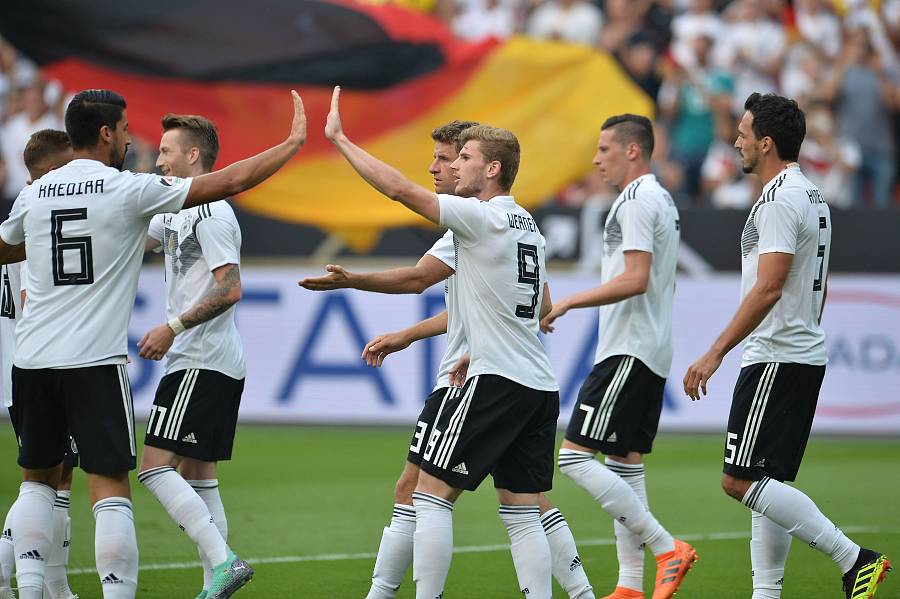
Draxler, meanwhile, the other 2014 midfield survivor, has matured no end since leaving the home comforts of Schalke and Wolfsburg for the bright lights of Paris Saint-Germain in early 2017, to the extent that he captained Germany at last summer's FIFA Confederations Cup.

If the general agreement is that Kroos and Draxler have significantly improved since 2014, and Khedira and Özil are performing at least at the same level, then the most interesting point of comparison between 2014 and 2018 midfield comes in the differences.
The major absentee is the unique Schweinsteiger – and while no one player could fill his considerable boots, Löw almost certainly has more midfield options to play with in his absence this time around.
That Löw has more combinations in midfield – this squad boasts eight midfielders to 2014's seven – is primarily thanks to Rudy's versatility.
The 28-year-old, who was involved in nine of 10 qualifiers en route to Russia, is nominally a holding midfielder, but will also be pencilled in as an emergency right-back in case of injury to Kimmich, allowing Löw more scope in his forward-thinking midfield options.
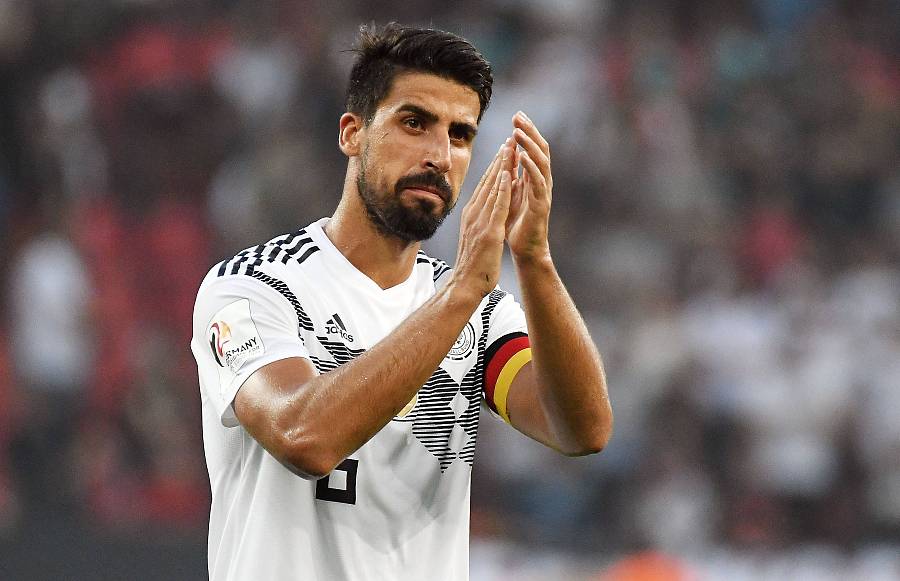
That characterisation is not intended to diminish Rudy's significant holding-midfield qualities, either: whereas Kramer was a last resort in 2014 (and had only won two caps prior to the tournament), Rudy has long been a nailed-on selection. A Confederations Cup winner, the 28-year-old has been playing at a far higher level – for Bayern – than Kramer had at the time (in an upper mid-table Gladbach side), perhaps also serving to underline the talent available to Löw this time around.

Beyond Rudy, Löw has opted to replace Schweinsteiger – who, at 29, was at his physical peak in 2014 – with two players. The Bayern midfielder's main strengths were his goal threat and his ability to control a game: Löw has sought to address those deficiencies in Schweinsteiger's absence by calling up Goretzka and Gündogan for their first World Cup.
Already Schweinsteiger's heir apparent at Bayern Munich, Goretzka – technically still a Schalke player when the tournament begins – brings an eye for goal with those unmistakeable, marauding runs from deep. The 23-year-old has already thrived in Russia, too, scoring three goals in four Confederations Cup games last summer under Löw's watchful eye to end the tournament as joint top scorer.

Gündogan replaces Schweinsteiger's midfield control; the Gelsenkirchen native is capable of bossing games from deep in the style Schweinsteiger almost pioneered in his pomp and would have been a 2014 shoo-in had he been fit. In fine fettle for Premier League champions Man. City in the second half of the season after returning from a knee injury, the former Dortmund midfielder chipped in with four goals, showing that he can mix it further forward with the best of them.
The other goalscoring absentee from 2014 is Götze, who – unlike Schweinsteiger – was fit and available for international selection, but did not even make Löw's provisional squad after capturing his form all too fleetingly this season due to a metabolic disorder. His replacement, at least in terms of position, is Brandt.

Although going into 2014 Götze was better known than Brandt is now thanks to his high-profile move to Bayern and impressive continental displays in BVB's run to the 2013 Champions League final, the positional and numerical similarities between the pair are startling.
Coming into this tournament, the Leverkusen forward boasts 27 career Bundesliga goals; going into 2014, Götze had 26. Coming into this tournament, Brandt is 22; going into 2014, Götze was also 22. Both possess that impishly creative streak; both are capable of playing across attacking midfield; both possess a preternatural calmness in front of goal; and both share a surprising turn of pace.
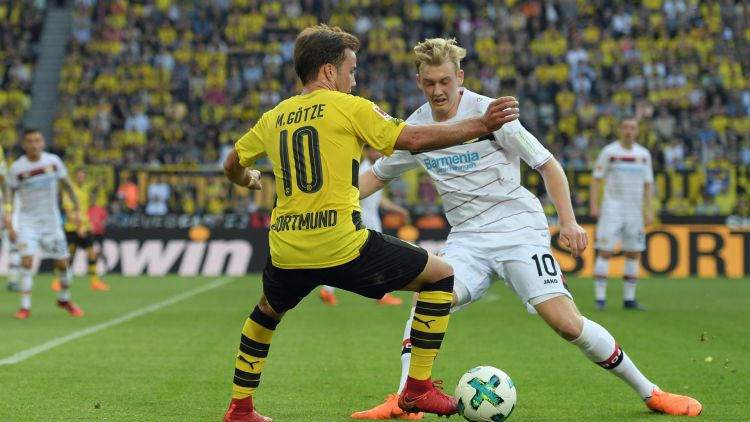
That Brandt edged out Leroy Sane – Premier League Young Player of the Year – after the Bayer forward's fine top-flight season (nine goals, five assists) further points to his qualities. He might not be quite as good yet as Götze was then, but he is not far off.
Verdict: The absence of Schweinsteiger – a one-of-a-kind midfielder – is a blow, but one that has to be set against the improvement of Kroos and Draxler, as well as the maturity and development of Khedira and Özil. Goretzka, Gündogan and Brandt are formidable reserves, offering Löw far more options than in 2014, while Rudy provides the balance essential to any squad. In midfield at least, Müller is right – 2018 shades it again.
Forwards: The Klose-shaped hole
2018 squad: Timo Werner (RB Leipzig), Thomas Müller (Bayern Munich), Marco Reus (Borussia Dortmund), Mario Gomez (Stuttgart)
2014 squad: Miroslav Klose (Lazio), Thomas Müller (Bayern Munich), Andre Schürrle (Chelsea), Lukas Podolski (Arsenal)
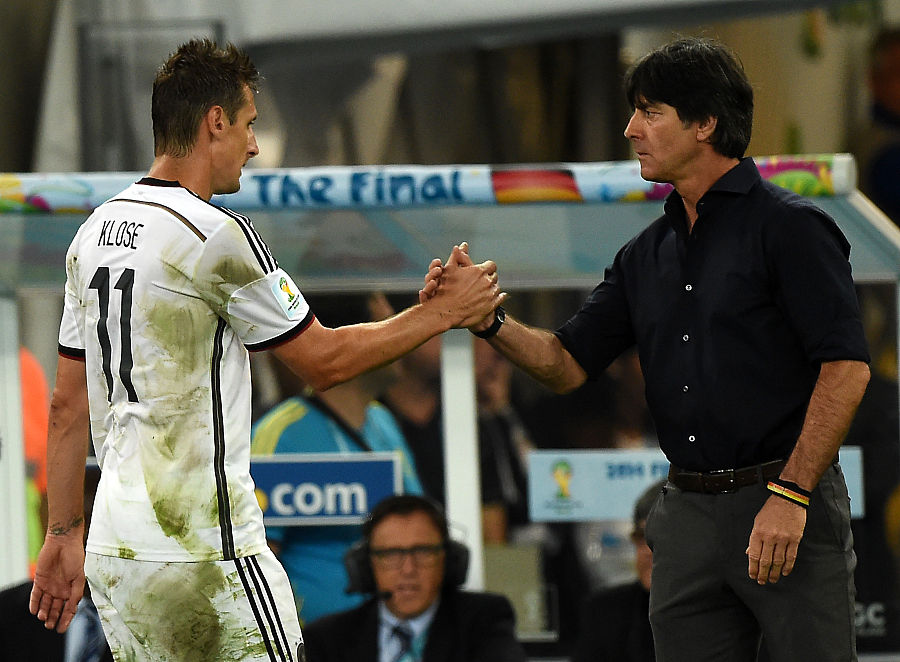
Where the 2014 squad does have the edge over its 2018 successor is Löw's options in the final third.
Back in 2014, Klose – now on Löw's coaching staff – remained one of international football's most-feared goalscorers (five goals in 2002, five in 2006, four in 2010), and overhauled Ronaldo's record of 15 with his second goal of the tournament in Germany's 7-1 win against Brazil.
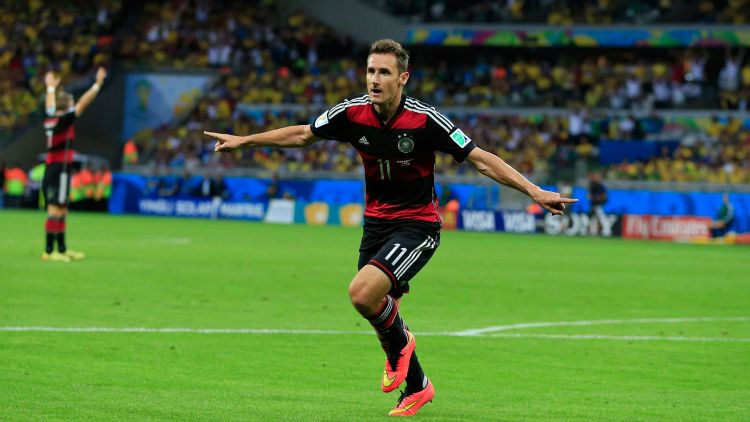
Put simply, Klose was a World Cup phenomenon – in the way only Germany seems to breed them – and, although not the quickest, he was the high-pressing, hard-working forward Löw's system required, the Poland-born striker doubling up as the perfect foil for Müller's clever runs in behind.
His replacement this time around, Werner, for all his quality, has nothing like such pedigree – and even though he is the youngest player to reach 150 Bundesliga appearances, he boasts no such experience at international level, having only made his senior debut in 2017.
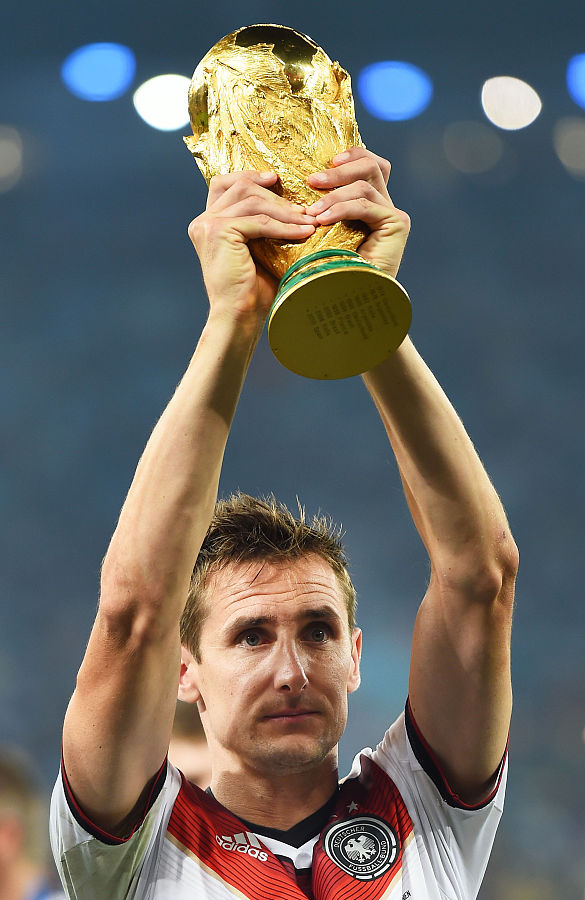
To prove that point: Klose came into the 2014 tournament boasting 13 seasons of top-level European football; Werner – impressive as he was during RB Leipzig's run to the UEFA Europa League last eight – boasts one.
Although Werner is quicker than Klose ever was, that is not necessarily the be-all and end-all for Löw; in fact, sometimes Werner's turbo-charged forward movement ends up occupying the space that Klose vacated in which Müller so thrives.
As for Müller – with the caveat that his domestic form really has little bearing on his international form - his goal numbers ahead of the 2010 and 2014 jamborees are worth scrutinising against those from the most recent Bundesliga campaign.
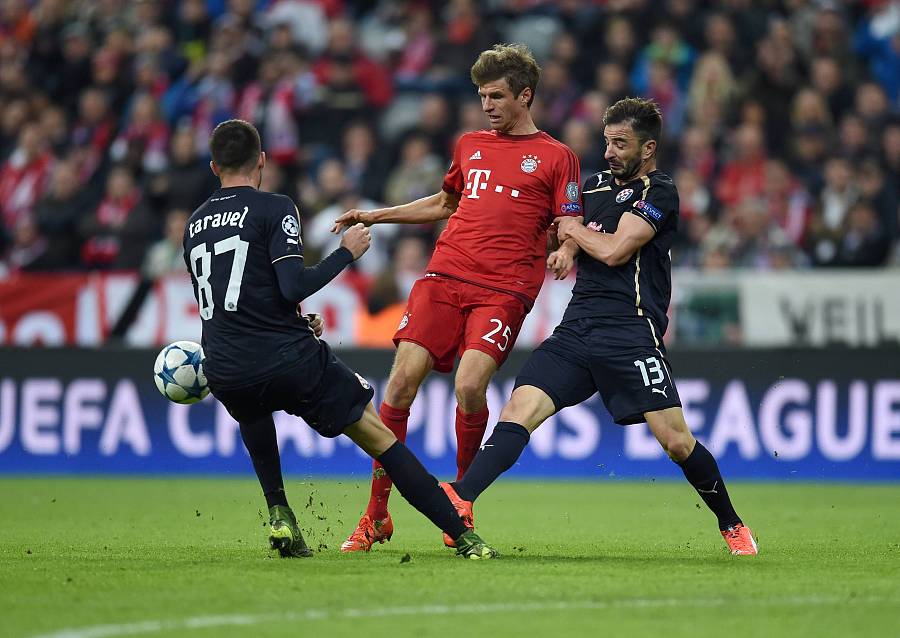
In both of the seasons prior to his five-goal World Cup hauls in 2010 and 2014, Müller returned 13 Bundesliga goals and scored a minimum of 19 across the season. Although this term he finished the domestic season as the top flight's leading provider (14 assists), the Bayern forward only netted eight Bundesliga goals – and 15 in all competitions. Although his Raumdeuter status has long since been cemented, this could be a rare fallow tournament for Müller.
For his part, Reus is an unknown quantity at a World Cup, although however you dress it up, it's safe to say he's an upgrade on 2014 Schürrle. Admittedly, Schürrle – then of Chelsea – came into 2014 after an impressive campaign having helped the London club win the English title, but Reus scored one fewer goal (seven) in 11 Bundesliga games for BVB this term than Schürrle managed in a whole season (eight) for Chelsea in 2013/14.
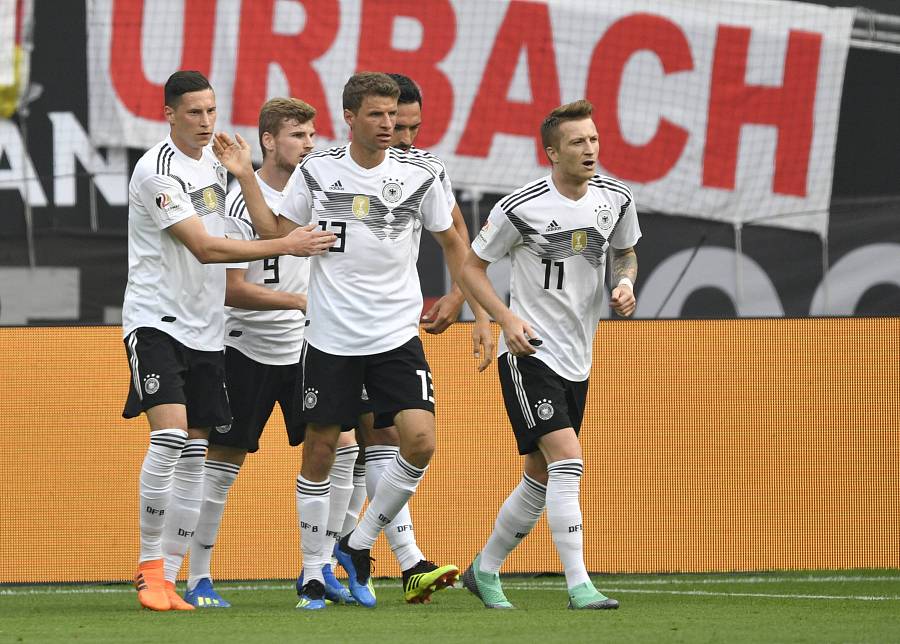
Verdict: Overall Klose, Podolski and peak-Raumdeuter Müller mean the 2014 squad takes this one. Löw's forward options in Brazil were better and more varied than this time around, although – as the coach himself conceded – Reus is quite a "weapon" to be able to call on.
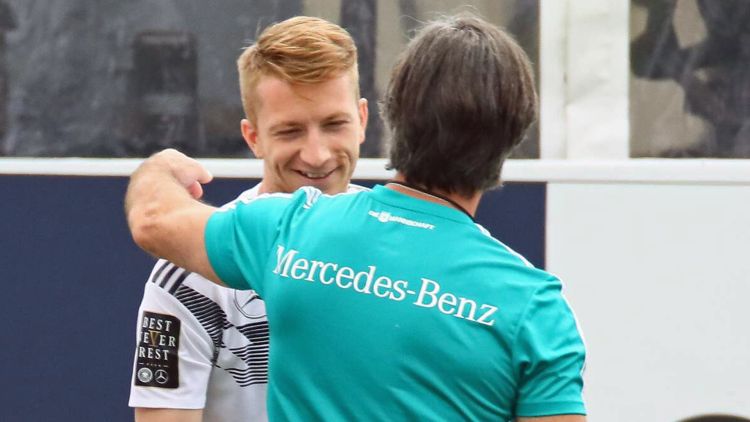
- 消息参考来源: BUNDESLIGA
- 严禁商业机构或公司转载,违者必究;球迷转载请注明来源“懂球帝”
- 懂球帝社区规范:抵制辱骂

